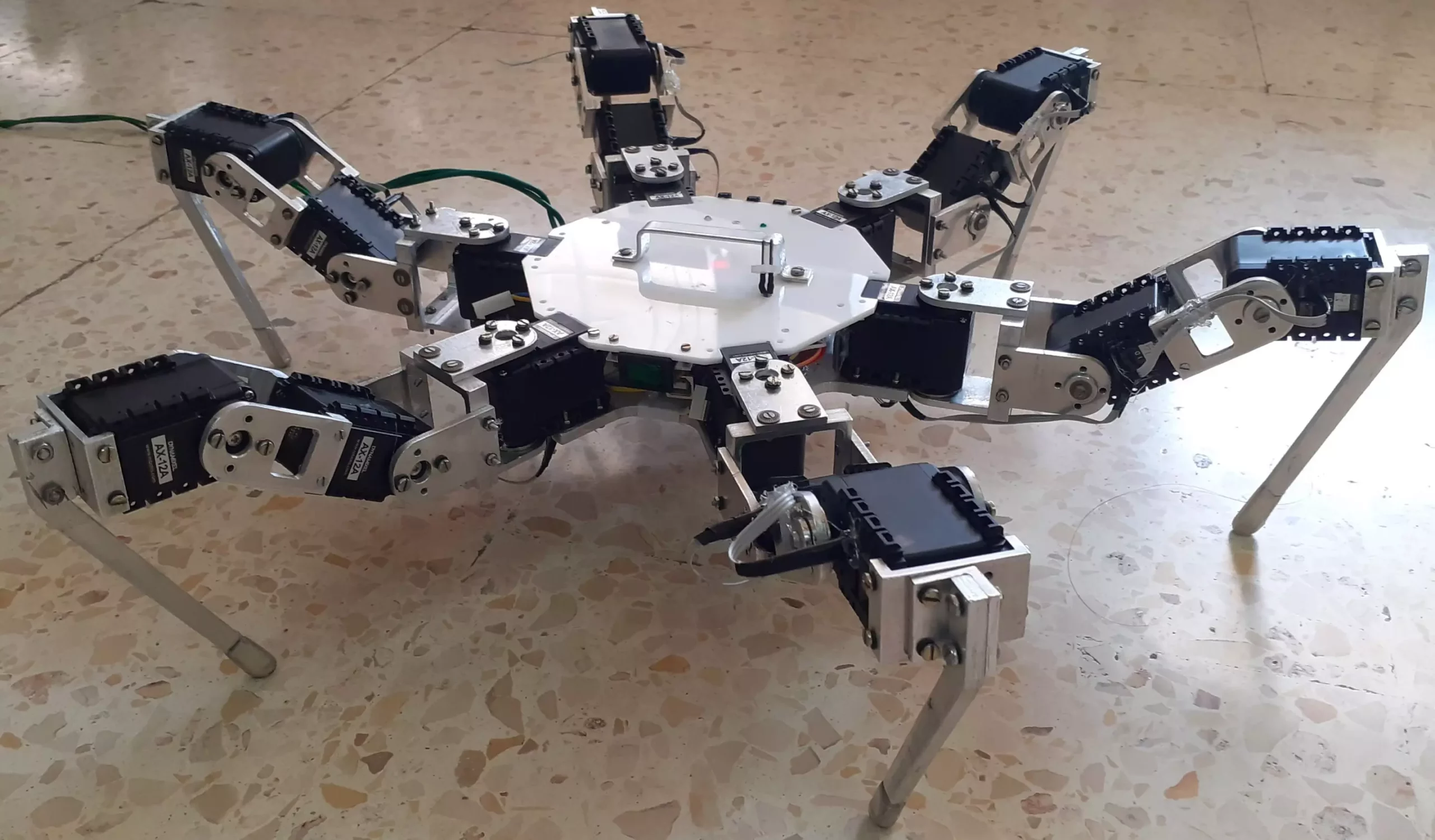

Robots that can navigate through various terrains efficiently and swiftly are highly advantageous in completing complex missions in challenging environments. These robots could play a key role in monitoring intricate natural environments like forests or searching for survivors after natural disasters. Legged robots, inspired by the structure of animals, are commonly designed to navigate varying terrains. To move swiftly through these terrains, legged robots need to adapt their movements and gait-styles based on changes in environmental conditions. Researchers at the Higher Institute for Applied Science and Technology in Damascus, Syria, have recently introduced a new method to facilitate smooth transitions between different gaits of a hexapod robot.
The proposed gait control technique introduced by the researchers is based on central pattern generators (CPGs), computational approaches that imitate biological CPGs. These are neural networks that regulate rhythmic movements like walking, swimming, and jogging in humans and animals. The architecture they have designed lays the groundwork for integrating machine learning techniques in future applications, ensuring enhanced malfunction compensation.
The team designed and simulated a six-legged (hexapod) robot to test their control architecture based on CPGs. Each leg of the robot is governed by a distinct rhythmic signal, with the essence of different gaits lying in the phase differences between these signals. The interaction design among the oscillators ensures seamless gait transitions. A workspace trajectory generator was also developed to translate the outputs of the oscillators into effective foot trajectories for the robot during transitions.
The proposed control architecture enables stable, efficient, and swift gait changes in both simulated and real hexapod robots. The harmonious blend of transition smoothness and speed, along with a validated mapping function for effective foot trajectories, sets this research apart from previous efforts. This innovative architecture could soon be tested in further experiments and applied to other legged robots to help them adapt to environmental changes with agility.
In future studies, the researchers plan to enhance their method to tackle potential malfunctions and improve performance when robots encounter challenging terrains. They aim to delve deeper into machine learning to refine the robot’s environmental adaptability. Exploring malfunction compensation and integrating pain sensing as feedback mechanisms are exciting prospects for the future.
Overall, the advancements in robotics navigation in challenging terrains demonstrate great potential for revolutionizing the field and improving the capabilities of robots in complex environments. The integration of machine learning techniques and innovative control architectures mark a significant step towards enhancing the adaptability and efficiency of legged robots in various applications. With further research and development, these advancements could pave the way for groundbreaking achievements in the robotics industry.
Despite the term "rare," rare earth metals (REMs) are not nearly as scarce as their…
A collaboration led by Rutgers University-New Brunswick has initiated a paradigm shift in our understanding…
Natural gas leaks are a growing concern in both urban and rural settings, with potential…
Recent groundbreaking research at the University of Vienna has unveiled a novel interplay of forces…
In recent years, perovskites have garnered significant attention in the fields of materials science and…
For decades, astronomers have probed the depths of the Milky Way, grappling with two perplexing…
This website uses cookies.